Engineered Wood Flooring Cost
Last updated 30th June, 2025
Within this guide, we’ll take you through everything you need to know about engineered wood flooring, and most importantly, we’ll tell you how much it costs.
The cost will change depending on supply and installation, optional extras, room size and the quality of the material, but whether you're considering a DIY project or hiring a professional tradesperson, this article covers everything you need to make an informed decision.
The engineered wood flooring cost typically ranges from £25 to £100 per m2, depending on the materials and labour involved.
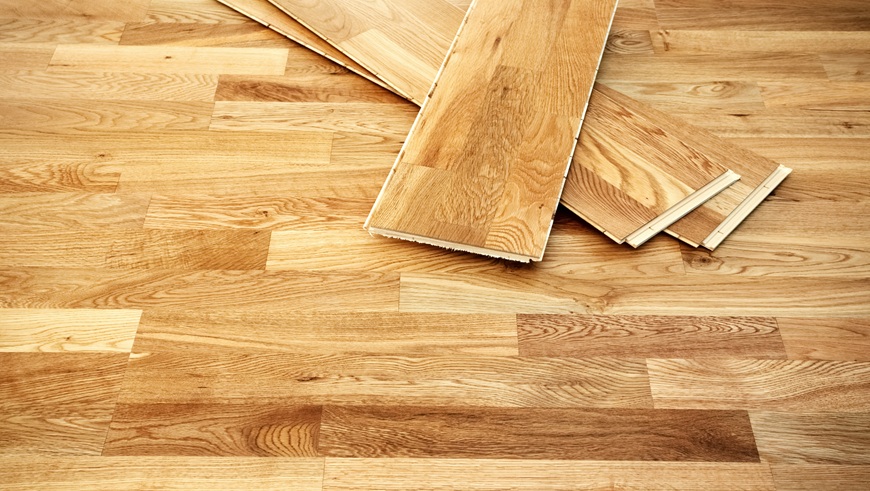
Table of Contents
How Much Does Engineered Wood Flooring Cost?
As mentioned, the cost of engineered wood flooring will vary depending on a range of factors such as the quality of flooring you choose, labour and any preliminary work required.
For basic engineered wood flooring, you can expect to pay between £25 and £40 per m2, while mid-range options usually cost around £40 to £60 per m2. If you're looking for premium finishes or exotic wood species, prices can rise to £100 per m2 or more.
The type of wood veneer on your chosen boards will have quite a significant factor on the overall cost, with oak being the most common and cost-effective option, and walnut or maple finding themselves on the more expensive end of the scale.
Additionally, the actual thickness of the boards and the overall plank size will affect pricing. Essentially, the thicker the wear layer, the more the floor can be sanded and refinished, which adds more years to its lifespan and value.
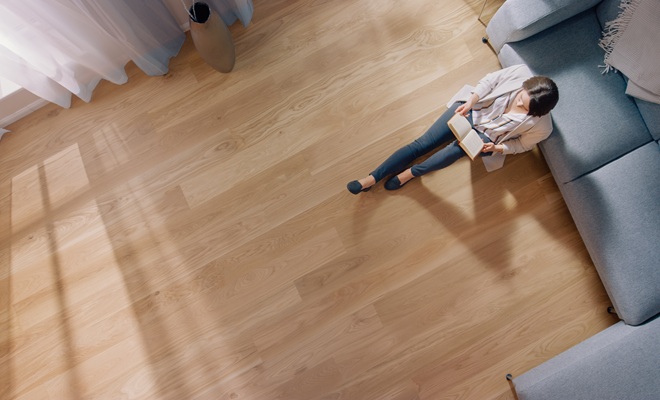
Room size and layout complexity also impact installation costs, with larger rooms requiring more materials and labour, while complex shapes or unusual layouts can increase fitting time and waste from offcuts.
You will also need to consider whether there is a requirement for any underlay or subfloor. If your subfloor is uneven or damp, additional materials and labour may be required.
Labour is quite a big element of the cost too, and you pay more or less for labour in different areas around the UK. Homeowners in London or the South East will pay more for tradespeople than those in the North of England, purely down to the cost of living and demand for services.
Despite these variables, engineered wood flooring remains a cost-effective, long-lasting, and attractive choice that compares favourably to both solid wood and laminate alternatives.
Engineered Wood Flooring Prices
| Quality Level | Supply | Installation | Total Cost | 10m2 | 20m2 | 40m2 |
|---|---|---|---|---|---|---|
| Basic | £20 | £15 | £35 | £350 | £700 | £1,400 |
| Mid-range | £35 | £20 | £55 | £550 | £1,100 | £2,200 |
| Premium | £65 | £25 | £90 | £900 | £1,800 | £3,600 |
*All costs are in M2
This table provides a general idea of what you might expect to pay depending on the quality of the engineered wood flooring you choose. Keep in mind that these are estimates, and actual costs can vary depending on your specific project.
Additional Costs to Consider
When you're pulling together a budget for installing engineered wood flooring in your home, you should ensure that you account for additional costs outside of the materials and demand aspects. There are quite a few common additional costs that crop up depending on the condition of your home and the type of project you are undertaking.
For example, the removal of your existing flooring can cost anywhere from £60 to £150, depending on the type of flooring and how easy it is to remove. As a general rule of thumb, carpet is the cheapest to take up, while tile and glued-down flooring can be more time-consuming, messy and expensive to remove.
Another common cost is the repair of the subfloor or the levelling of your underfloor. If your subfloor isn’t perfectly level or has moisture issues, you may need to spend between £50 and £120 to correct this before laying new flooring. This is a common issue in older properties where floors may have settled unevenly over time.
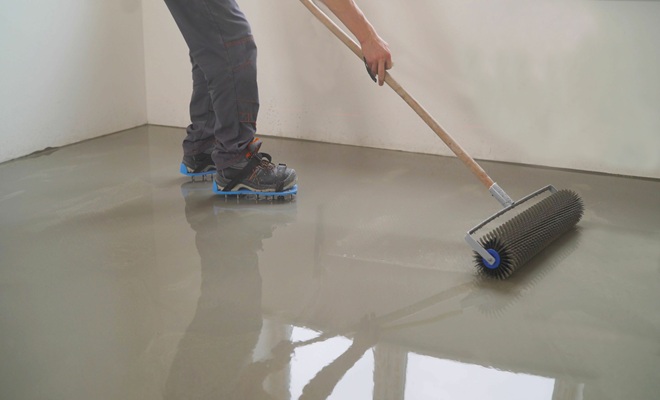
The installation of an underlay or a damp-proof membrane is also a critical element of the project, especially for ground floor installations. Underlay improves comfort underfoot, provides some insulation, and acts as a moisture barrier. You can expect to pay around £3 to £8 per m2 for this. If you’re replacing skirting boardsalongside the new flooring, the cost for this ranges from £60 to £200, depending on the number of boards and the complexity of fitting.
Door trimming is another common additional cost if your new flooring is thicker than the old one. This is generally a quick and easy job, charged at between £25 and £50 per door.
Cost Breakdown Calculator
Let’s take a look at a typical engineered wood flooring installation to give you a better idea of how a job is priced up, and where the bulk of the budget goes. Imagine you are installing mid-range engineered flooring in a medium-sized room measuring around 20m2.
The material cost at this quality level would be £55 per m2, making the total for materials £1,100. Labour costs at £20 per m2 would add another £400. You should also budget for additional expenses such as underlay, furniture removal, and waste disposal, which could come to about £200.
This gives you a total estimated cost of £1,700 for a 20m2 room.
Materials
£1,100
Labour
£400
Additional costs
£200
Labour Costs and Timeframes
Labour is a massive aspect of the job, with most professional flooring fitters in the UK charge between £15 and £25 per m2. Some may charge per day, with rates around £200 to £300, depending on the complexity of the job and your location, but you may be better getting a fixed price for the entire job.
The time it takes to complete a full engineered wood flooring installation will depend mainly on the size of the room and how easy your chosen boards are to install. Generally, a small room of 10m2 can usually be completed in one to two days, a medium-sized room of 20m2 might take two to three days, while laying engineered wood flooring across a full ground floor area of 50m2 or more could take three to five days.
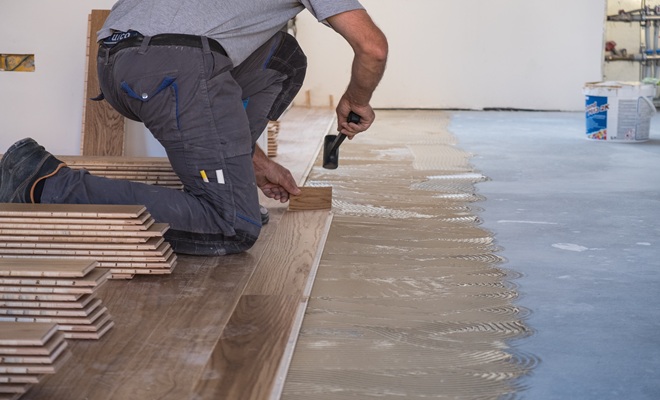
Of course, delays can always occur in any home refurbishment project, with the most common delays being for complex rooms, hard-to-reach areas or any repair or preparation work. If you have opted for a custom wood panel order, this may also take some time to be manufactured and delivered, so bear this in mind when working out timescales.
Types of Engineered Wood Flooring
There is a wide variety of engineered wood flooring options on the market, and each has its own advantages and disadvantages, along with its own costs. Here they are in a little more detail:
The most popular wood species for engineered wood flooring is oak, as it is durable and incredibly affordable; however, it will not offer you the richer and darker finishes that walnut or ash do. However, walnut and ash are not as hard-wearing as oak and are quite a bit more expensive.
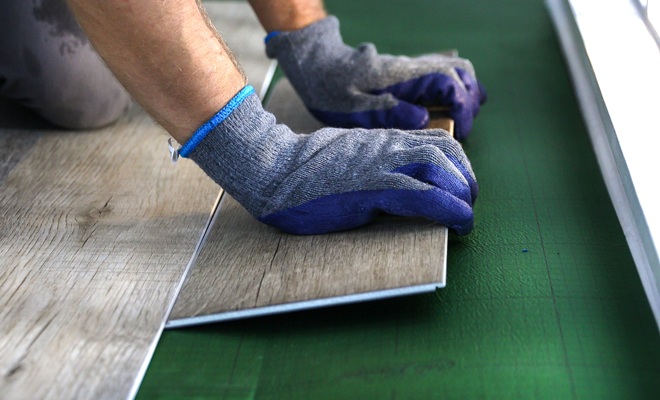
The type of finish that is added to the wood has a huge impact on how it looks and feels, not to mention its maintenance requirements. Brushed and oiled finishes really emphasise the natural grain of the wood, which many homeowners find incredibly appealing. Lacquered finishes, on the other hand, are glossier and easier to clean but may show scratches more easily.
Engineered wood flooring can be installed in one of three ways - click-lock, glue down and nail down. Click-lock systems are the easiest to install, especially for a DIY project, as they don’t require glue or nails, but they are more expensive. Glue-down and nail-down methods are more secure and stable but require more time and expertise, making them better suited to professional installation.
Wood Species:
- Oak: Durable and cost-effective
- Walnut: Luxurious, darker tone, higher cost
- Maple & Ash: Lighter appearance, good for modern homes
Finishes:
- Brushed & Oiled: Natural look, shows grain
- Lacquered: Easy to clean, more reflective
Installation Methods:
- Click-lock: DIY-friendly
- Glue-down: Requires precision
- Nail-down: More permanent, often used over timber subfloors
Thickness & Wear Layer:
- 12 mm - 14 mm thickness: Standard residential use
- 3 mm - 6 mm wear layer: Can be sanded and refinished
| Type | Pros | Cons | Cost (per m2) |
|---|---|---|---|
| Oak | Durable, timeless style | Common | £40 - £60 |
| Walnut | Rich appearance | Expensive | £70 - £100 |
| Click-lock | Easy DIY install | May not suit all subfloors | £30 - £60 |
| Glue-down | Very stable | Professional installation recommended | £40 - £80 |
DIY vs Professional Installation
A big question is always whether the installation of engineered wood flooring can be completed as a DIY project or whether you require professional help.
If you have selected a click-lock system, the installation should be incredibly straightforward with just basic skills and tools such as saws, spacers, underlay and a tapping block. While this is good news for saving some money, it does have its pitfalls.
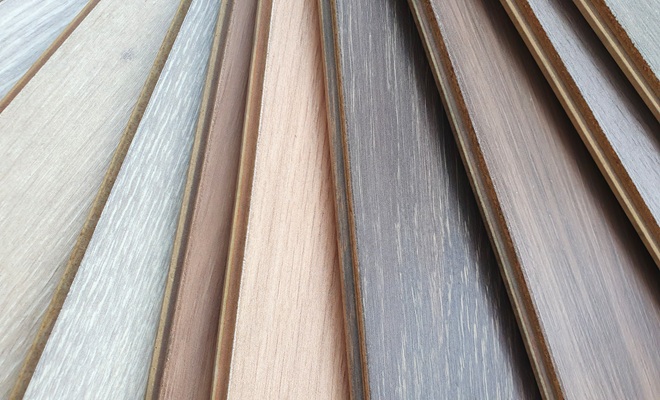
There are many common mistakes that DIYers make when installing their own engineered wood flooring. For one, they fail to leave adequate expansion gaps around the edges of the room, leading to buckling as the wood expands. Misaligning planks or incorrectly staggering them can create an unprofessional appearance and compromise the durability of the floor.
For glue or nail-down applications, professional installation is essential, and the same can be said for any project that is complex or large. Not only that, but a qualified fitter can complete the job far quicker and to a much higher standard.
Compliance and Regulations
When it comes to installing engineered wood flooring, you should be aware of some regulations in the UK.
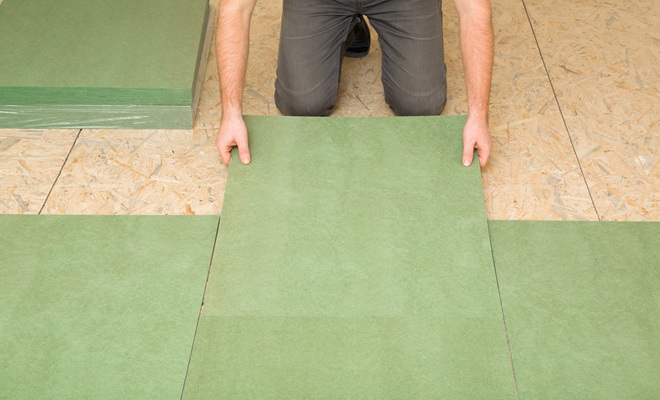
For example, any insulation or structural work involving the subfloor must comply with UK Building Regulations, and in flats, you may also be required to use an acoustic underlay to reduce sound transmission and comply with the lease requirements on your tenancy agreement.
Moisture layers and barriers are essential on ground floors and in basements to prevent any damp from damaging your new flooring.
Cost of Removing Old Flooring
In the majority of cases, old flooring will need to be removed before any new flooring can be laid. As we mentioned earlier in the guide, carpet is the easiest to remove and costs between £60 and £100. Similar to laminate flooring, which can also be lifted relatively easily, with removal costs ranging from £70 to £110.
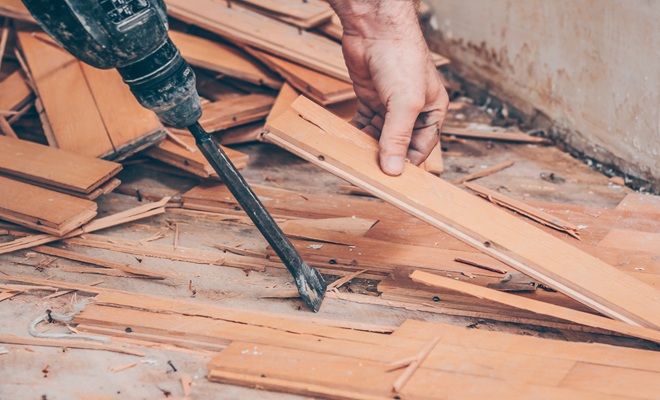
Removing tile flooring is more labour-intensive, messy and generates a lot of waste, so it will cost between £100 and £200, especially if the tiles are fixed with strong adhesive or require specialised tools to break them up.
Many homeowners think it’s easier to remove the old flooring themselves, but it is very important to ensure that you do so safely, and with the right rolls. A big issue here is the potential of damaging the underfloor, which would lead to more costly and difficult repairs down the line.
FAQs
Finding and Hiring a Professional
If you have opted to hire a professional to carry out your installation, there are a few tips for finding the right person. First, look for tradespeople who are members of recognised industry bodies such as the NICF (National Institute of Carpet & Floorlayers) or the CFA (Contract Flooring Association). Generally, membership to these organisations indicates quite a high level of professionalism.
Next, you should get multiple quotes, asking each potential tradesperson about their experience with engineered wood flooring and if they have any examples of previous projects. By getting multiple quotes you can make sure you are paying a fair price, as well as finding someone who you click with.
Taking the time to choose the right installer ensures that your flooring not only looks great but lasts for decades, providing excellent value for money.









